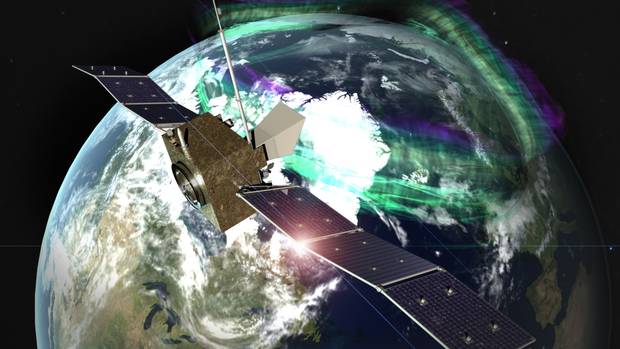It’s hard to witness a vivid display of northern lights dancing across the night sky and not be transfixed by a natural effect that seems almost supernaturally mysterious and beautiful. But when Eric Donovan looks at the aurora borealis he sees a tool for discovery.
“It’s my instrument,” the University of Calgary physicist said. “I can use it to sense what is going on further out in space.”
Now Dr. Donovan hopes to take his observations of auroras directly into orbit to tackle new questions about the unseen particles and magnetic fields that lie just beyond our atmosphere.
With support from the Canadian Space Agency, he is in the early stages of developing what he hopes will be the best camera ever to observe the aurora borealis in ultraviolet light. If he succeeds, the camera will be Canada’s contribution to a European-Chinese space mission that will look at auroras as never before and help connect them to an array of largely invisible but powerful processes that researchers collectively call “space weather.”
Those processes are constantly unfolding in the magnetosphere, a vast region where electrically charged particles from the sun are ensnared by Earth’s magnetic field and can endanger satellites as well as affect communications and power systems on the ground.
“You can make the mistake of thinking it’s a vacuum,” Dr. Donovan said, noting that while the magnetosphere encompasses more than 100,000 times Earth’s volume, the particles within it might collectively weigh no more than a car. Yet their behaviour can have big consequences, which is why Dr. Donovan has spent nearly 20 years studying auroras.
Auroras are generated when fast-moving particles are pulled toward Earth’s north and south magnetic poles. As they descend, they collide with molecules of nitrogen and oxygen in the atmosphere, creating an eerie glow that is brightest between 90 and 150 kilometres above the ground.
Viewed from a distance, auroras can look like wavy curtains of light. When they are directly overhead, they can make the entire night sky come alive.
This spring, Dr. Donovan and his team will begin deploying cameras and other sensors at ten stations across the Prairie provinces that will provide a regional view of the aurora borealis. Funded by the Canada Foundation for Innovation and Alberta, among other sources, the project promises to deliver the most comprehensive view yet of auroras across multiple scales and wavelengths of light. Dr. Donovan calls the system “TREx” (short for Transition Region Explorer) because its goal it to probe a region where the north-south orientation of Earth’s magnetic field begins to stretch out to form a long “magnetotail” that extends from Earth like an invisible windsock.
Meanwhile, to study the entire magnetosphere, the European and Chinese Space Agencies have joined forces to build SMILE – the Solar wind Magnetosphere Ionosphere Link Explorer. Slated for launch in 2021, the spacecraft would be placed into an elliptical orbit that carries it 120,000 kilometres over the northern hemisphere where it can see, in one glance, the entire auroral oval while also looking sideways to make measurements of the magnetotail.
“This mission is going to tell us how the system works as a whole and you need to know that to understand space weather and what’s happening in Earth’s vicinity,” said David Sibeck, an astrophysicist with NASA’s Goddard Spaceflight Center in Greenbelt, Md.
Dr. Donovan is part of the mission team and his dream is to build a key camera for SMILE that will help connect the regional effects observed by TREx with this more global view. Its data would not only lead to a better understanding of space weather but potentially give scientist the ability to predict when and where aurora will appear .
SMILE still has a long way to go and there are many steps to clear before Canada will be ready to consider committing the $30-million needed to build the ultraviolet imager. But during a session at the American Geophysical Union meeting in San Francisco last month, Dr. Donovan said it was clear from conversations among scientists that momentum for the mission is building.
“For the first time this is kind of starting to feel real,” he said. If so, the northern lights may soon become a little less mysterious.
IVAN SEMENIUK – SCIENCE REPORTER
The Globe and Mail
Published Sunday, Jan. 22, 2017 9:16PM EST
Last updated Sunday, Jan. 22, 2017 10:20PM EST

